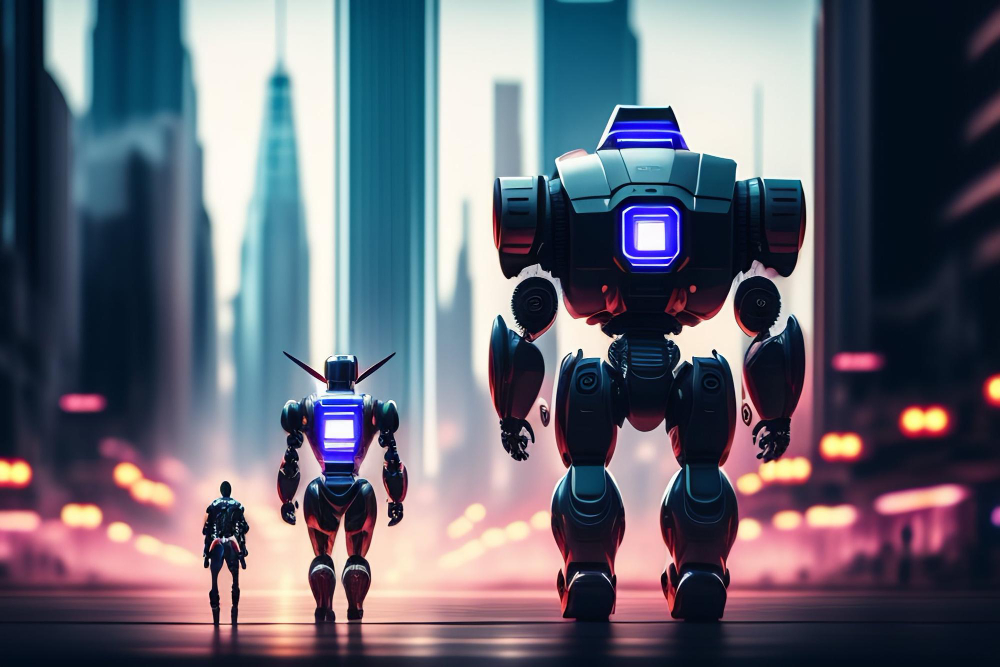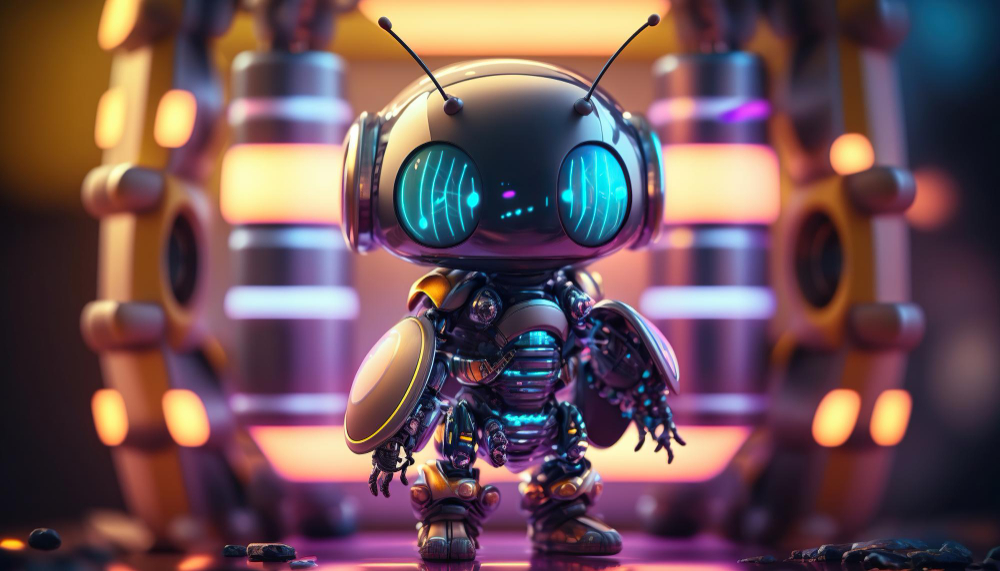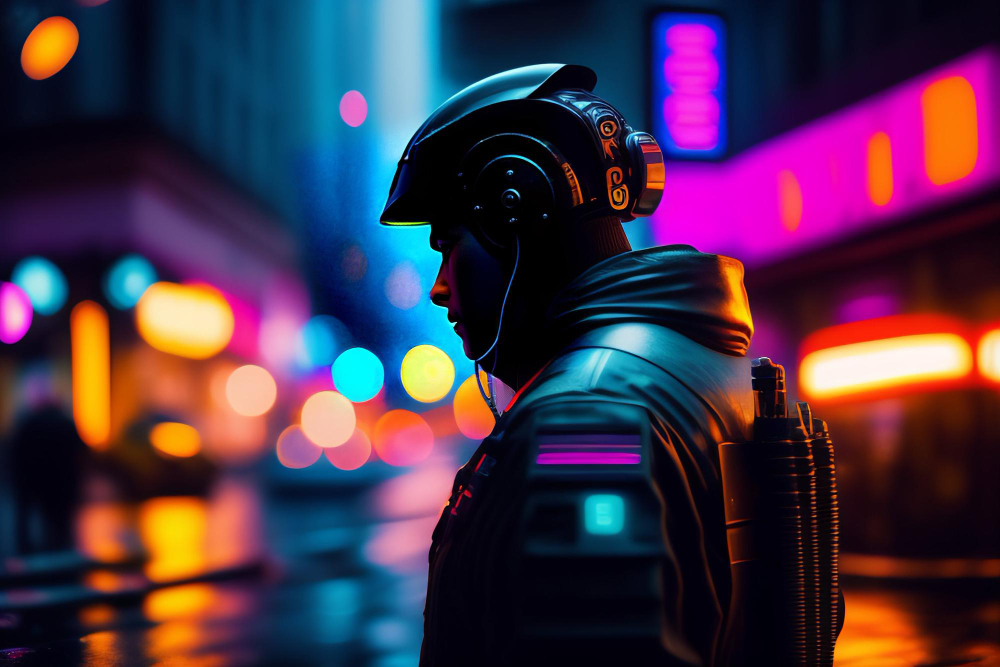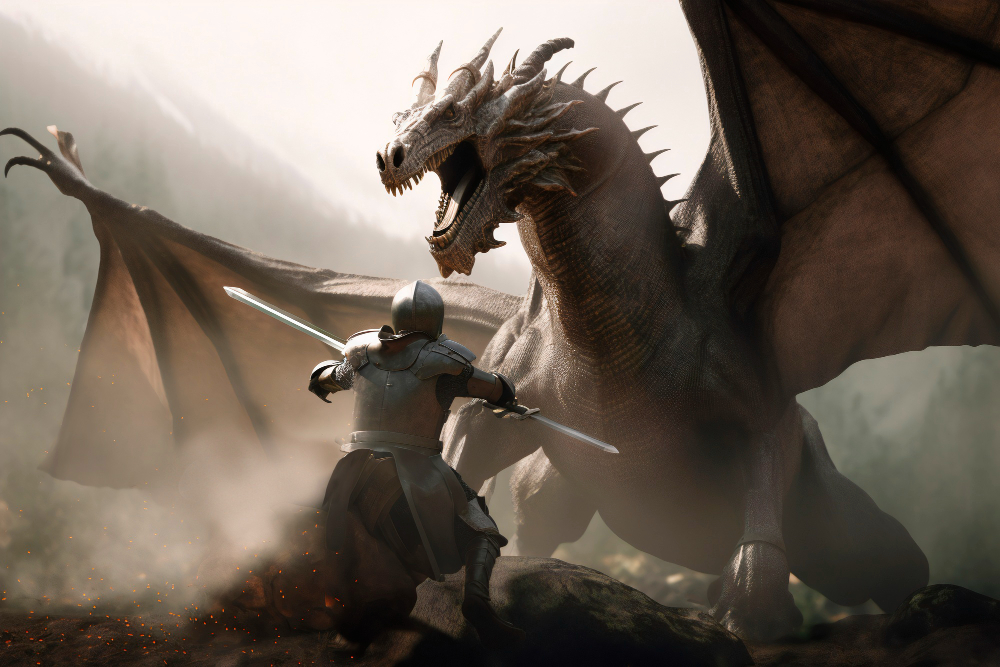In the ever-evolving landscape of digital content creation, 3D character creators have emerged as a groundbreaking force, reshaping the way we design, animate, and bring life to our imaginative worlds. These remarkable tools, including 3D character creator online platforms and AI-driven solutions, have paved the way for more accessible and efficient content production, while the use of 3D models, particularly low-poly characters, and Blender assets have added a new dimension to creative possibilities.
In this blog, we’ll embark on a journey through the fascinating realm of 3D character creators, exploring their transformative impact on digital content. We’ll delve into the advantages of online 3D character creators, the role of AI in character generation, the versatility of 3D models, the charm of low-poly characters, and the magic of Blender assets.
1. 3D Character Creators
At its core, 3D character creators are software or platforms designed to empower creators to sculpt, customize, and generate 3D characters and models. These digital artisans offer a canvas for animators, game developers, and artists to breathe life into their visions, transforming them into stunning three-dimensional entities. By blending artistic expression with technological ingenuity, 3D character creators have become instrumental in today’s digital landscape.
The Evolution of Digital Content Creation
To comprehend the impact of 3D character creators, we must first acknowledge the remarkable journey of digital content creation. It’s a journey that began with pixelated sprites and evolved into the high-definition, lifelike characters that grace our screens today. Over time, technology has advanced, software has become more sophisticated, and the creative boundaries have expanded, bringing us to the cutting edge of content creation that we stand at today.
Significance of 3D Character Creators in the Industry
The significance of 3D character creators in the creative industry cannot be overstated. These tools have introduced transformative efficiencies, making content production more accessible, cost-effective, and user-friendly. Creators, from independent artists to large studios, now have the means to realize their artistic visions with greater ease and speed. This empowerment extends beyond aesthetics; it touches every facet of digital content creation, from entertainment and education to marketing and beyond.
2. The Rise of 3D Character Creator Tools
Overview of 3D Character Creator Online
The rise of 3D character creator online platforms has ushered in a new era of accessibility and convenience. These web-based tools offer an array of features, making it possible for a wider audience to engage in the art of character design without the constraints of high-end hardware or complex software installations.
Advantages of Online Tools: Online 3D character creators offer a range of advantages, from immediate access to a wealth of design options. Users can dive into the creative process without the hassles of software installation or compatibility issues. This eliminates many of the traditional entry barriers to 3D character design.
Accessibility and User-Friendly Features: The user-friendly interfaces of these online platforms cater to both beginners and experts, creating an environment where the complexities of 3D modeling become more approachable. The democratization of character design has been a driving force behind the widespread adoption of online tools, opening the creative floodgates.

The Role of AI in 3D Character Generation
AI-driven 3D character creators have taken content creation to new heights, offering automation and time efficiency as their mainstay. These intelligent systems analyze inputs, understand creative intent, and quickly generate characters that align with desired criteria, drastically reducing the time and effort required for detailed character design.
How 3D Character AI is Revolutionizing Content Creation: Artificial intelligence has introduced a paradigm shift in content creation. AI algorithms are now capable of comprehending and translating human intent into lifelike characters autonomously. This advancement enables creators to explore more intricate aspects of their projects, while the AI handles the repetitive and time-consuming tasks.
Automation and Time Efficiency: Automation is at the heart of the AI revolution in 3D character generation. The algorithms automate the design process, analyze and adapt to user inputs, and generate characters swiftly. This not only accelerates content creation but also empowers creators to be more productive and focus on the creative aspects of their work.
3. Types of 3D Models and Characters
In the realm of 3D content creation, diversity is the key to artistic expression and functionality. This section explores the various types of 3D models and characters that creators can work with, from the importance of 3D models to the flexibility of Blender assets and the charm of low-poly characters.
Understanding 3D Models
Definition and Importance: 3D models are the fundamental building blocks of the digital world, allowing creators to breathe life into their concepts and narratives. These models are three-dimensional representations of characters, objects, or environments, created using specialized software. They serve as the canvas on which the magic of 3D character creators is painted.
The importance of 3D models lies in their ability to add depth, detail, and realism to digital content. Whether it’s a lifelike character in a video game or an architectural rendering, 3D models enhance the visual and interactive aspects of the digital experience.
Blender Models and Their Versatility: Among the 3D modeling tools available, Blender stands out for its versatility. Blender is an open-source 3D creation suite that offers a wide range of models, textures, and assets for creators to utilize. Its flexibility and compatibility with various 3D software have made it a favorite choice for artists, animators, and game developers alike.
Blender models cover a vast spectrum of possibilities, making them ideal for different projects, from animation and game development to architectural visualization. The availability of ready-made models and textures accelerates the design process, enabling creators to focus on the artistic aspects of their work.
Exploring Low-Poly Characters
What Are Low-Poly Characters?: Low-poly characters, in contrast to high-poly counterparts, are characterized by their minimalistic polygon counts. These models exhibit a stylized, simplified appearance, reducing the number of geometric elements that make up the character. Low-poly characters are an aesthetic choice that has found practical application across various industries.
The reduction in polygon count results in a streamlined, geometric look. This style is reminiscent of early video game characters but has gained renewed popularity due to its unique visual charm. Low-poly characters are often associated with minimalism, making them perfect for certain design styles and resource-constrained environments.
Benefits of Using Low-Poly Models: There are several benefits to using low-poly models. First, they are lightweight, requiring fewer computational resources for rendering and animation. This makes them suitable for real-time applications, such as video games, where performance is a crucial factor.
Low-poly characters are also easier to animate and render, saving both time and resources. They possess an aesthetic appeal that resonates with fans of retro and minimalist design. It makes them an excellent choice for indie game developers, small animation studios, or artists looking to convey a specific artistic style.

Leveraging Blender Assets for Content Creation
How Blender Assets Enhance 3D Character Creation: Blender assets play a pivotal role in content creation. These assets encompass a wide array of resources, from 3D models and textures to animations and scripts, all designed to assist creators in their projects. The benefits of leveraging Blender assets are numerous.
By using Blender assets, creators can significantly reduce the time and effort required for content creation. Ready-made models and textures can be incorporated into projects, saving valuable time that can be redirected towards creative aspects of the project.
Availability and Customization Options: Blender assets are widely available through online communities and marketplaces, offering a vast selection of resources suitable for different genres and styles. Furthermore, creators can customize these assets to align with their specific project requirements, allowing for a high degree of creative freedom.
This blend of availability and customization ensures that artists and developers have access to a rich repository of assets. This can be tailored to meet their artistic vision, making Blender assets an invaluable resource in the 3D content creation process.
4. Use Cases of 3D Character Creators
The impact of 3D character creators extends far beyond the confines of the creative studio. This section explores real-world applications of these tools, shedding light on their significance in diverse industries.
Entertainment Industry
3D Characters in Video Games: Video games have witnessed a transformative revolution in character design thanks to 3D character creators. These tools empower game developers to craft highly detailed, lifelike characters that enhance the player’s immersive experience. From action-packed adventures to emotionally charged narratives, 3D characters are at the heart of the gaming world.
Animation and Film Production: In animation and film production, 3D character creators serve as the unsung heroes behind the scenes. They facilitate the creation of intricately detailed and expressive characters that drive the storyline. Animated films have leveraged 3D characters to tell stories that were once considered beyond the realm of possibility.
Education and Training
Role of 3D Characters in Virtual Learning: The integration of 3D characters in virtual learning environments has revolutionized education. These characters provide an engaging and interactive element to virtual lessons. Medical students, for example, can explore virtual 3D anatomical models. While history enthusiasts can interact with historically accurate characters, adding a layer of engagement and comprehension to the learning process.
Training Simulations and Realism: In training simulations, 3D characters enhance realism and effectiveness. From aviation training to medical simulations, these characters offer trainees a lifelike environment to develop critical decision-making and problem-solving skills. The use of 3D characters adds authenticity and depth to these training scenarios.
Marketing and Advertising
How 3D Characters Enhance Branding:
Marketing and advertising professionals have harnessed the appeal of 3D characters to create memorable branding experiences. These characters become mascots for products, embodying the brand’s personality and values. From cute and friendly to sophisticated and professional, 3D characters play a pivotal role in establishing brand identities.
Interactive Campaigns and Customer Engagement: Interactive marketing campaigns featuring 3D characters have redefined customer engagement. Through interactive storytelling and personalized interactions, brands can connect with their audience on a more profound level. 3D characters bridge the gap between digital content and consumer interaction, making the brand experience more immersive and engaging.

5. The Future of Digital Content Creation
The technology behind 3D character creators is continually evolving. As hardware and software become more powerful, creators can expect even greater levels of detail and realism in their characters. Future advancements may include more sophisticated AI algorithms, real-time ray tracing, and enhanced virtual reality experiences.
The integration of AI and real-time rendering technologies holds immense promise for digital content creation. AI algorithms will become more capable of understanding human intent and generating highly detailed characters autonomously. Real-time rendering will enable creators to view and modify their characters in real-time, reducing the need for lengthy rendering processes.
As the digital content creation landscape evolves, new trends and possibilities are sure to emerge. AR and VR applications, for instance, will increasingly incorporate 3D characters, fostering immersive user interaction. Additionally, collaborative online platforms for 3D character creation may become more prevalent, fostering seamless collaboration among artists and developers.
6. Conclusion
3D character creators have ushered in a new era of digital content creation, offering accessibility, efficiency, and boundless creative opportunities. From the rise of online platforms to the power of AI-driven character generation, these tools have transformed the way we bring ideas to life. The future of digital content creation holds incredible promise. For professional or beginners, these tools elevate your projects, unlocking new realms of imagination. Embrace the transformation, and let your creativity run wild in the world of 3D characters.
Crafting game characters or enhancing educational content with interactive 3D models? These versatile tools are here to help. Explore 3daily to transform your projects, unlocking accessibility, efficiency, and endless creative opportunities.



